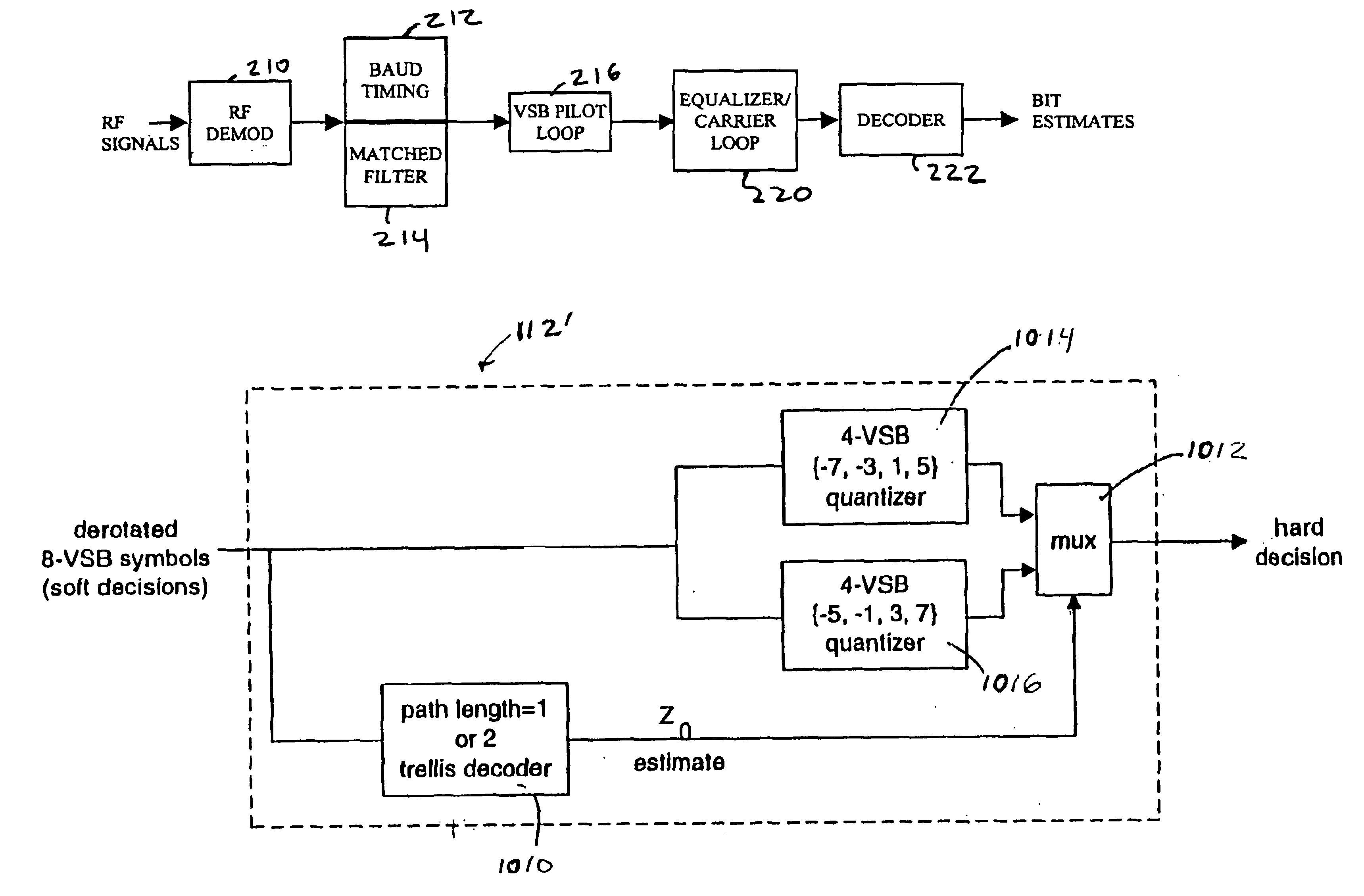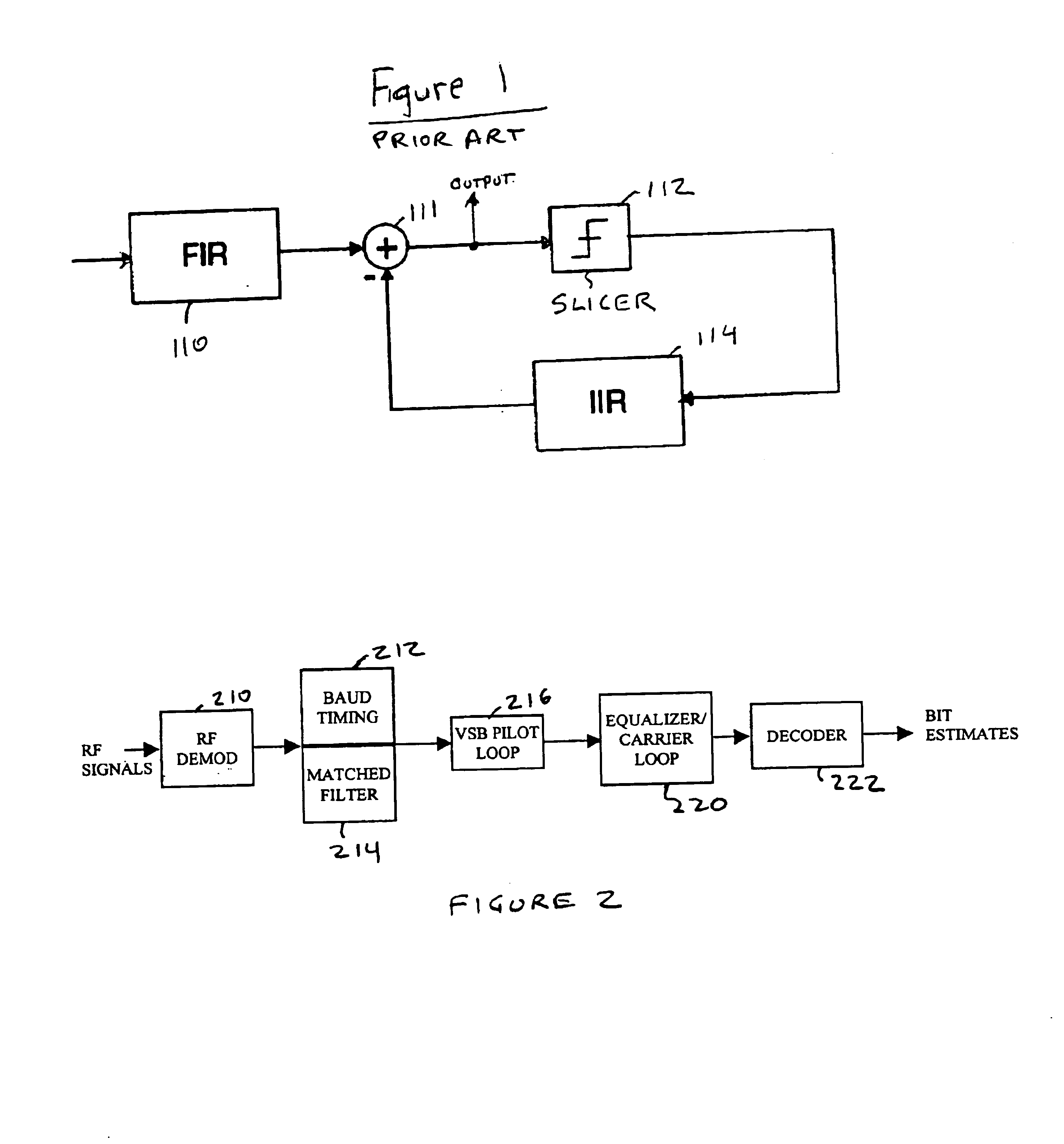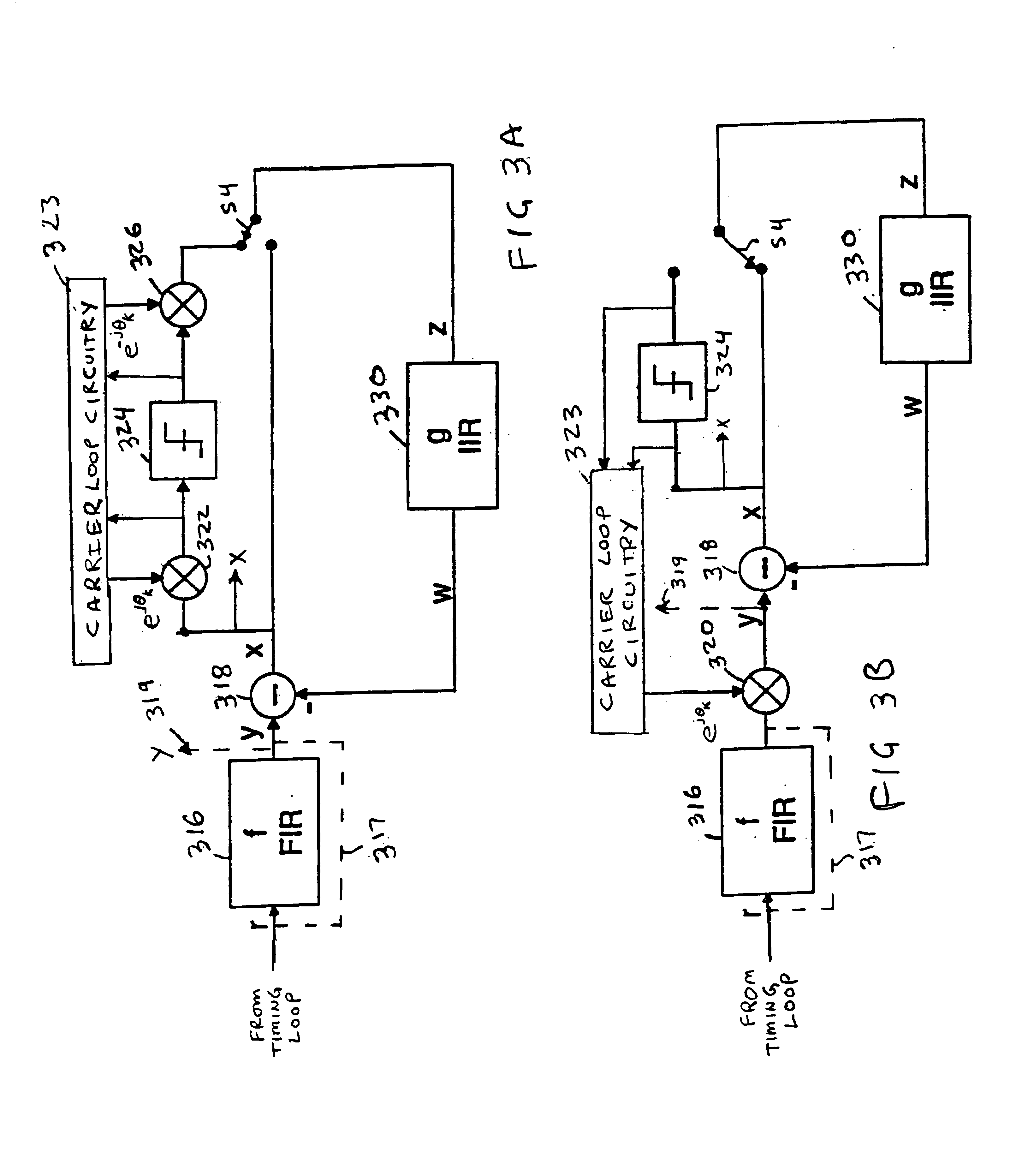Data slicer for combined trellis decoding and equalization
a data slicer and data equalization technology, applied in the field of data slicers or quantizers, can solve the problems of prohibitive delays for dfe, signal distortion that may occur in the transmitter, and delay the decision on what symbol was transmitted by several symbol periods
- Summary
- Abstract
- Description
- Claims
- Application Information
AI Technical Summary
Problems solved by technology
Method used
Image
Examples
case 1
emory=2
In this case, the Z0(n) estimate is based on path metrics p0(n), p1(n), P2(n), p3(n). If the minimum path metric, p, among {p0(n), p1(n), P2(n), p3(n)} corresponds to either states 0 or 1 (i.e. p0(n) or p1(n)) then the estimate for Z0(n) equals 0, otherwise the estimate equals 1. The rationale for this selection is based on equation (2) above. This case may be described by equation (12).
Z0(n)=0 if minimum {p0(n), p1(n)}<minimum {p2(n), p3(n)} (12) =1 otherwise
Case 2: Path Memory 1
In this case, the Z0(n) estimate is based on path metrics p0(n-1), p 1(n−1), p2(n-1), p3(n-1). If the minimum path metric among {p0(n-1), p1(n-1), p2(n-1), p3(n−1)} corresponds to either states 0 or 2, then the estimate for Z0(n) equals 0, otherwise the estimate equals 1. The rationale for this selection is based on equation (1) above. This case may be described by equation (13)
Z0(n)=0 if minimum {p0(n−1), p2(n−1)}<minimum {p1(n−1), p3(n−1)} (13) =1 otherwise.
Clearly the advantage of this ...
case 3
emory=2, (low complexity)
In this case, the estimate of Z0(n) is based on path metrics {p0(n−1), p1(n−1), p2(n−1), p3(n−1)}, and on ‘extending’ the two best states corresponding to the minimum two path metrics from among {p0(n−1), p1(n−1), p2(n−1), p3(n−1)}. In this case, the possible results are given by the conditional statements shown in Tables 1 and 2.
TABLE 1If p0(n − 1) and p2(n − 1) are the best states then Z0(n) = 0If p1(n − 1) and p3(n − 1) are the best states then Z0(n) = 1
TABLE 2If p0(n − 1) and p1(n − 1) are the best states thenif minimum {p0(n − 1) + bm(‘a’), p0(n − 1) + bm(‘b’)}<minimum {p1(n − 1) + bm(‘c’), p1(n − 1) + bm(‘d’)} thenZ0(n) = 0else Z0(n) = 1
It is possible to simplify the final computation in Table 2 to:if p0(n−1)+bm(‘ab’)<p1(n−1)+bm(‘cd’) then Z0(n)=0else Z0(n)=1
Where bm(‘ab’) is given by equation (14) and bm (‘cd’) is given by equation (15).
bm(‘ab’)=Euclidean distance (current sample, Z0=0 slicer)=Euclidean distance(current sample, {−7,−3,1,5}) ...
PUM
 Login to View More
Login to View More Abstract
Description
Claims
Application Information
 Login to View More
Login to View More - R&D
- Intellectual Property
- Life Sciences
- Materials
- Tech Scout
- Unparalleled Data Quality
- Higher Quality Content
- 60% Fewer Hallucinations
Browse by: Latest US Patents, China's latest patents, Technical Efficacy Thesaurus, Application Domain, Technology Topic, Popular Technical Reports.
© 2025 PatSnap. All rights reserved.Legal|Privacy policy|Modern Slavery Act Transparency Statement|Sitemap|About US| Contact US: help@patsnap.com



